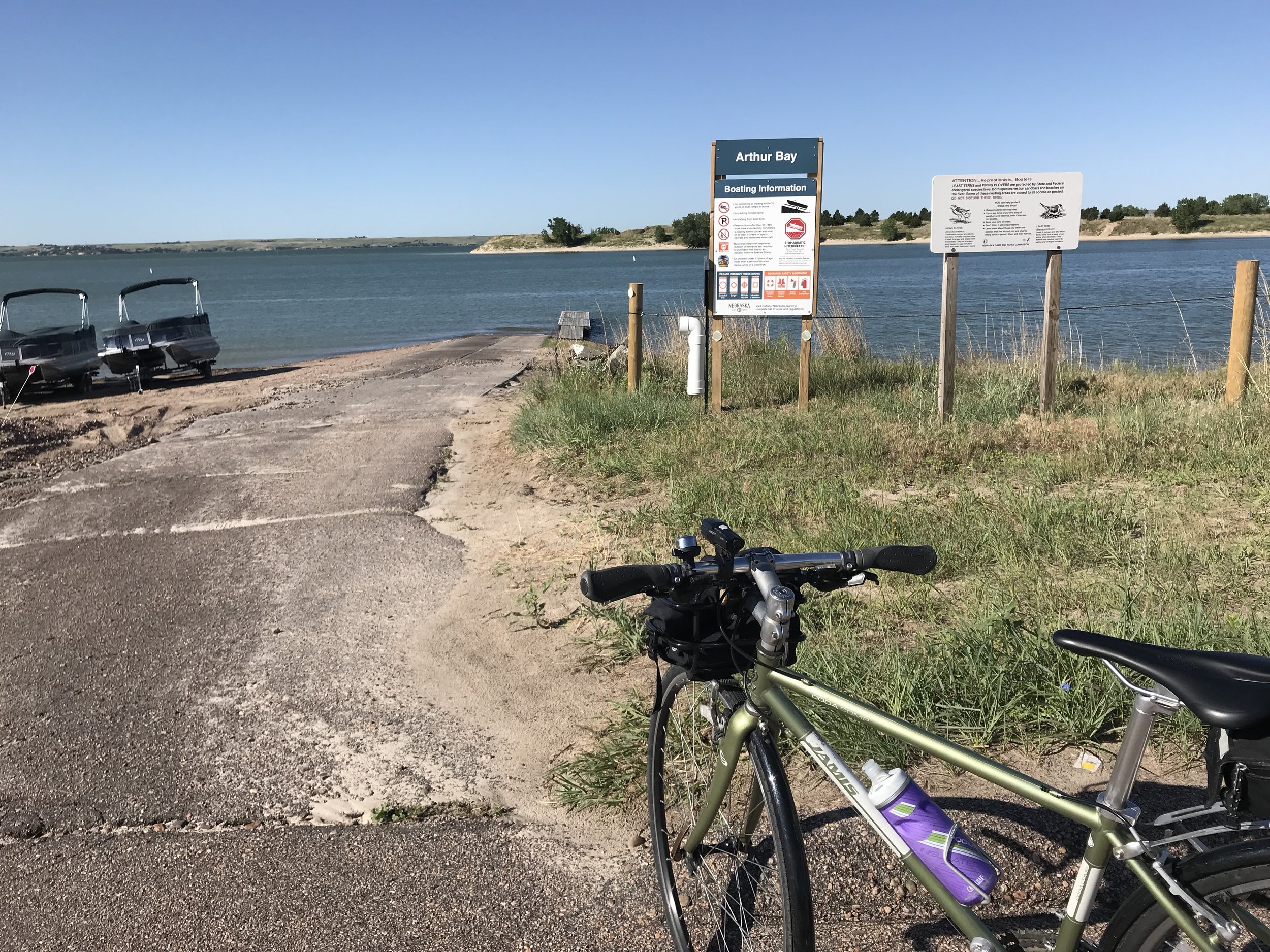After several days working in the studio during my residency at Cedar Point Biological Station, I was eager to pedal a few miles. I loaded my trusty commuter, Sage, onto the rack on the back of my van and drove over the Kingsley Dam into the state recreation area around Lake McConaughy. I pedaled along the lake road, grateful that much of the Independence Day crowd had left the area. It was a warm, windy morning and the route offered a few small climbs on the way to the LeMoyne entrance into the park. I enjoyed seeing blooming wildflowers, waving grasses and a single mule deer watching me from under a canopy of trees. After my ride, I drove around the Lake Ogallala state park, seeing a girl running to launch a rainbow-fish kite and watching the spray at the Central Nebraska Public Power and Irrigation District facility.
As I drove back toward Cedar Point, I turned to look around the Hilltop Inn property. As I was reading the marker noting the dates of the dam’s construction, I realized the view was very close to that of the Ogallala camera taking photos for the Platte Basin Timelapse project. As a longtime admirer of Michael Forsberg and Michael Farrell’s photography, videography and prairie advocacy, I was excited to know I was near a camera that was gathering images for this interesting compilation. I looked for the camera and found it. It felt like a celebrity sighting! I suppose it just shows what a geek I can be about the Great Plains.
Plaque at Kingsley Dam noting it was completed as a public works project in 1941 when Franklin D. Roosevelt was president. The view was familiar.
and there’s the camera, mounted on this tower, taking images for the Platte River Basin Timelapse project
On Saturday, I left Cedar Point and stopped in Kearney for lunch at Tru Cafe, strolled down a few blocks downtown and into the Museum of Nebraska Art to see the exhibit “A River Runs Through It.” For so many reasons, including my ongoing collaboration around river themes with Marcia Joffe-Bouska and Tom Quest, I was interested in seeing the exhibit. And what a treat it was to see photos by Michael Farrell as part of the main exhibit and an entire adjoining gallery devoted to the Platte Basin Timelapse project.
During a storm earlier in the week, Kearney saw intense rainfalls and resulting flooding. This year has been filled with stories of rivers overflowing their banks in Nebraska, and those images and ideas will certainly affect future art-making, although I’m not quite sure yet what shapes they will take. Look for some of those explorations in an expanded exhibit of “Rivers,” which will travel to Norfolk Arts Center in December and will be on display through February 2020.








